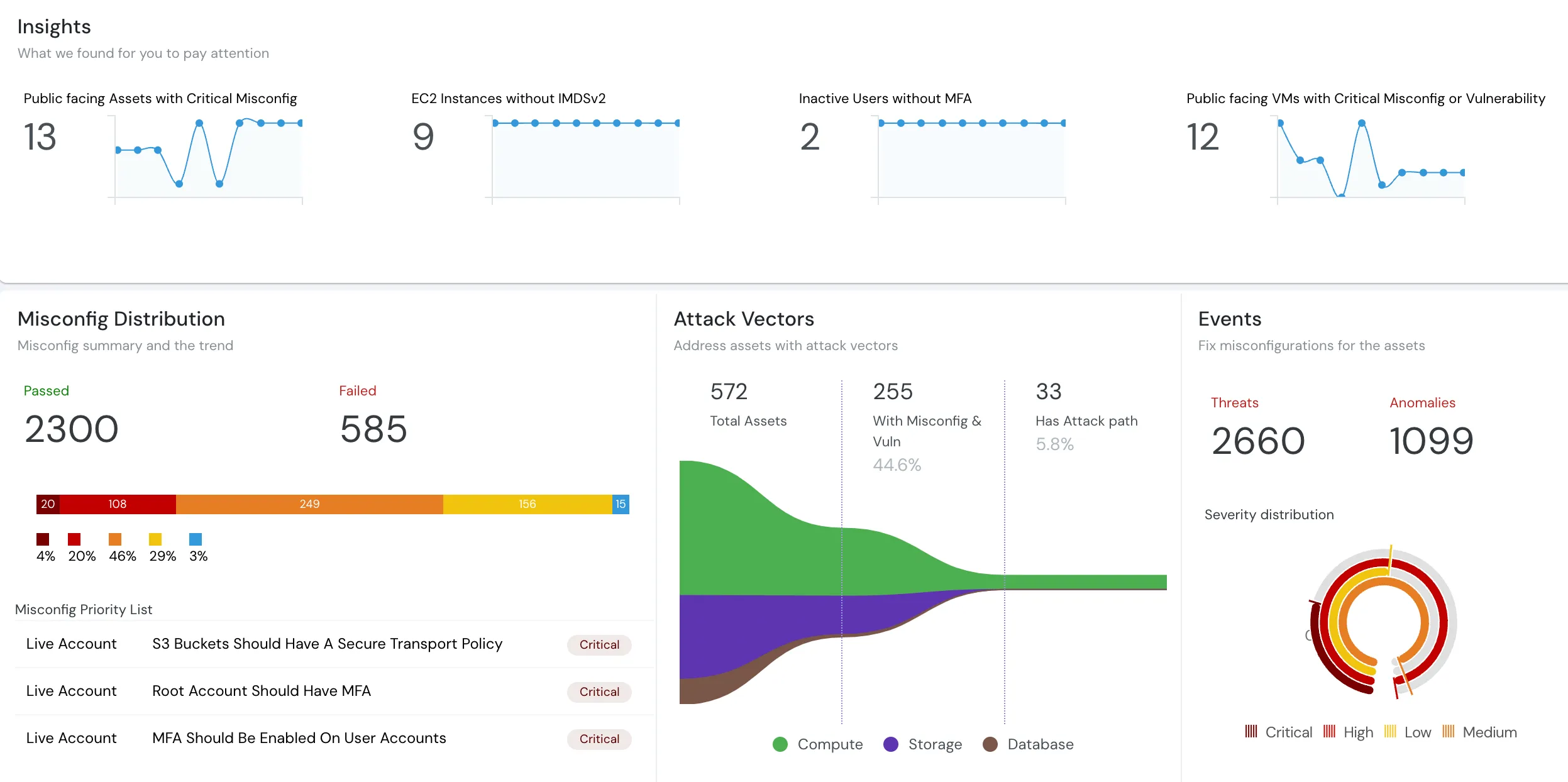Cloudanix
AWS RedShift Audit
Deferred maintenance should be enabled for all your AWS Redshift clusters in order to keep your data warehouse running without interruption during critical business periods. Amazon Redshift service gives you the option to defer maintenance for your clusters by up to 14 days.
Redshift Clusters Should Have Deferred Maintenance Enabled
Deferred maintenance should be enabled for all your AWS Redshift clusters in order to keep your data warehouse running without interruption during critical business periods. Amazon Redshift service gives you the option to defer maintenance for your clusters by up to 14 days.
Redshift User Activity Logging Should Be Enabled
User activity logging should be enabled for your Amazon Redshift clusters for troubleshooting purposes.
Idle Redshift Clusters Should Be Terminated
Idle AWS Redshift clusters should be terminated in order to help lower the cost of your monthly AWS bill.
Redshift Automated Snapshots Should Have Retention Period Enabled
The automated snapshot retention period set for your AWS Redshift clusters should be a positive number, meaning that automated backups are enabled for the clusters.
Redshift Clusters Should Allow Version Upgrade
Version Upgrade should be enabled for Redshift clusters to automatically receive upgrades during the maintenance window.
Redshift Cluster Audit Should Have Logging Enabled
Audit logging should be enabled for Redshift clusters for security and troubleshooting purposes.
Redshift Cluster Should Not Use Default Master Username
AWS Redshift database clusters should not be using "awsuser" (default master user name) for database access.
Redshift Clusters Should Not Use Default Port
Amazon Redshift clusters should not be using port 5439 (default port) for database access.
Redshift Clusters Should Be Encrypted
Database encryption should be enabled for AWS Redshift clusters to protect your data at rest.
Redshift Clusters Should Be Encrypted With KMS CMKs
Redshift clusters should be encrypted with KMS customer master keys (CMKs) in order to have full control over data encryption and decryption.
Redshift Clusters Should Be Launched Within a VPC
Your Redshift clusters should be provisioned within the AWS EC2-VPC platform instead of EC2-Classic platform (outdated) for better flexibility and control over clusters security, traffic routing, availability and more.
Redshift Cluster Should Not Be Publicly Accessible
Amazon Redshift clusters should not be publicly accessible in order to minimise security risks.
Redshift Cluster Nodes Should Be Of The Desired Type
Your existing Amazon Redshift cluster nodes should have the desired type established by your organization based on the workload deployed.
Clusters With High Disk Usage Should Be Scaled
AWS Redshift clusters with high disk usage should be scaled to increase their storage capacity.
Redshift Clusters Should Use Latest Generation Of Nodes
Redshift clusters should be using the latest generation of nodes for performance improvements.
Redshift Nodes Limit
Your AWS account should not have reached the limit set for the number of Redshift cluster nodes.
Redshift Parameter Group Require SSL
AWS Redshift non-default parameter groups require SSL to secure data in transit.
Redshift Reserved Node Lease Expiration In The Next 30 Days
Amazon Redshift Reserved Nodes (RN) should be renewed before expiration.
Redshift Reserved Node Lease Expiration In The Next 7 Days
Amazon Redshift Reserved Nodes (RN) should be renewed before expiration.
Redshift Reserved Nodes Should Not Have Status - Payment Failed
Ensure that none of your AWS Redshift Reserved Node purchases have been failed.
Redshift Reserved Node Should Not Have Status - Payment Pending
Ensure that none of your AWS Redshift Reserved Node purchases are pending.
Redshift Reserved Node Recent Purchases Should Be Reviewed
Ensure Redshift Reserved Node purchases are regularly reviewed for cost optimization (informational).
Redshift Cluster Should Not be Underutilized
Underutilized Redshift clusters should be downsized in order to optimize AWS costs.
Redshift Reserved Nodes Should Not Be Unused
Ensure that your Amazon Redshift Reserved Nodes are being utilized.
Security for your Code, Cloud and Data
Cloudanix replaces your 5-6 disjointed security tools within 30 minutes.
Get StartedCLOUDANIX
Insights from Cloudanix
Explore guides, checklists, and blogs that simplify cloud security and help you secure your infrastructure.
Case Studies
Real-world success stories where Cloudanix helped organizations secure their cloud infrastructure. Watch how we made a d...

What is CSPM?
Understand what Cloud Security Posture Management (CSPM) is and how it automates security and compliance across cloud en...
CASB, CSPM, SIEM: Cloud Security Essentials
Understand how CASB, CSPM, and SIEM work together to enhance your cloud security posture and ensure better governance.
What is Cloud Audit?
In-depth assessment of cloud environment for security, compliance, and optimization. Identify vulnerabilities, ensure da...
Top 10 Challenges of CSPM
Cloud environments are getting more complex and dynamic day by day, making it difficult to gain complete visibility into...
Cloudanix docs
Cloudanix offers you a single dashboard to secure your workloads. Learn how to set up Cloudanix for your cloud platform ...
Changelog
A complete history of changes, improvements, and fixes for Cloudanix. Subscribe to get notified about the latest updates...
